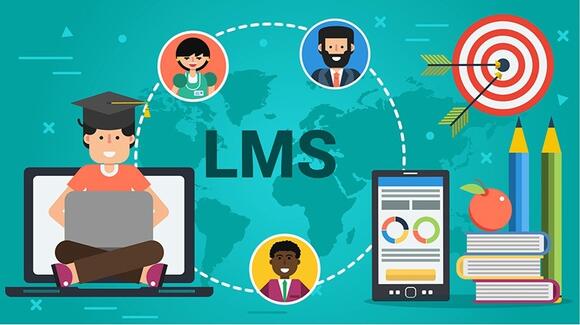Learning management systems (LMS) have become ubiquitous in education, with major players like Canvas, Blackboard, and Schoology dominating the K-12 and higher education markets. However, the proliferation of different LMS platforms poses a significant challenge for educational content publishers who want to distribute their materials widely.
Most major LMS are designed as walled gardens – they can easily import content from other platforms, but have no incentive to make exporting easy. This poses a major roadblock for content publishers, who often have to maintain courses across multiple LMS to serve their clients. Managing content across platforms is messy, time-consuming, and often results in outdated materials.
Fortunately, the Learning Tools Interoperability (LTI) standard provides a way forward. LTI Deep Linking, in particular, enables seamless integration of third-party content into LMS without requiring separate logins. For content publishers, LTI support is becoming a must-have to satisfy clients using different LMS platforms.
The Trouble with Manual LMS Integrations
Before LTI, publishers relied on manual workarounds to distribute content across LMS:
– Requiring separate logins: This is a non-starter, since students and teachers don’t want the hassle of managing credentials across platforms.
– Single sign-on (SSO): SSO simplifies login, but users still have to remember which platform to access. Not seamless.
– File exporting: Administrators must manually export files from the publisher LMS and import them into the school LMS. Major headache for keeping content updated across hundreds of courses.
– Common file formats: Publishers can export courses as IMS Common Cartridge, SCORM, or H5P. But manual exporting is still required.
All these options have significant drawbacks for maintaining current, integrated curriculum across LMS platforms. LTI Deep Linking provides a better way.
Understanding LTI Deep Linking
LTI Deep Linking allows seamless embedding of publisher content within an LMS. The content appears natively as part of the LMS courses, even though it resides on the publisher’s platform.
With LTI 1.3, the latest LTI specification, Deep Linking enables:
– Single sign-on access, so users never leave their LMS.
– Automatic synchronization of updated content. No manual exporting required.
– Secure transfer of assignment grades back to the LMS gradebook.
For students and teachers, the third-party content appears as seamlessly integrated components of their courses. This frictionless access encourages engagement with publisher curriculum.
The LTI Provider Problem
Here’s the catch: major LMS platforms act as LTI consumers, but not LTI providers. They can import LTI content, but don’t allow other systems to access their courses via LTI.
This means publishers face a roadblock:
– Building courses in Canvas won’t help if your customer uses Blackboard or Schoology.
– Even API access is limited, since LMS companies limit exporting to avoid losing customers.
Publishers are left with imperfect options:
– Stick to one LMS, but lose many potential clients.
– Maintain the same courses across multiple LMS – an unwieldy solution.
– Find an LMS that supports LTI content publishing. But the major players refuse.
Using LTI Integration Platforms
The most effective solution is to use an LTI integration platform designed for content publishers.
These tools support both LTI consumption and publishing, acting as a bridge across LMS platforms. Here is a typical workflow:
1. Import courses into the integration platform from the publisher’s source LMS.
2. Establish LTI 1.3 Deep Linking from the platform into the client’s LMS.
3. Update and edit content in the platform, with changes automatically propagating through LTI links.
4. Transfer grades securely back to the LMS via LTI Grade Passback services.
With this approach, publishers maintain a single source of truth for content while still integrating seamlessly with client LMS systems. Manual exporting and syncing of courses becomes unnecessary.
For content teams, investing in an LTI integration platform solves the multi-LMS dilemma. Your materials can reach any major LMS through a frictionless embedded experience. For schools and universities, it’s a win as well – easier access to publisher content keeps instructors and students happy.
The Future of LTI
LTI continues to evolve, with LTI Advantage introducing new capabilities like analytics, rostering, and assignments. But LTI Deep Linking already provides huge value for integrated content.
Supporting LTI is becoming essential for publishers to satisfy ed tech buyers. And with the rise of LTI integration platforms, content teams can finally manage materials in a single system while still integrating with the major LMS platforms.
The manual workarounds will soon be a thing of the past. With LTI Deep Linking, seamless content integration across LMS delivers a better experience for all stakeholders. Content publishers need to start integrating LTI if they haven’t already – the future of integrated curriculum depends on it.
